Introduction
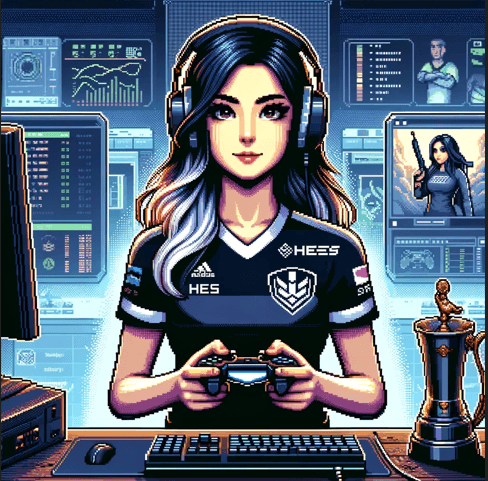 I want to kick off by talking about Angel at Dusk from Akiragoya and published by Henteko Doujin. The tutorial, dubbed “Logic of Shmups,” is a true masterpiece. For instance, one Steam reviewer called it a “giant cherry on top.” I love that the game strips away everything extra to leave only raw, bullet-hell brilliance. Furthermore, the close-range HP regeneration mechanic shines. It rewards high-risk play and forces you to master positioning. As a competitive player, I appreciate how every upgrade path in Original Mode stacks without cap—pure power creep done right. Although a few folks find the visuals and sound overwhelming, I see that as part of the design: they thrust you into a living, breathing nightmare. Once you adjust your audio levels or toggle visual filters, everything clicks.
I want to kick off by talking about Angel at Dusk from Akiragoya and published by Henteko Doujin. The tutorial, dubbed “Logic of Shmups,” is a true masterpiece. For instance, one Steam reviewer called it a “giant cherry on top.” I love that the game strips away everything extra to leave only raw, bullet-hell brilliance. Furthermore, the close-range HP regeneration mechanic shines. It rewards high-risk play and forces you to master positioning. As a competitive player, I appreciate how every upgrade path in Original Mode stacks without cap—pure power creep done right. Although a few folks find the visuals and sound overwhelming, I see that as part of the design: they thrust you into a living, breathing nightmare. Once you adjust your audio levels or toggle visual filters, everything clicks.
Overall Impression
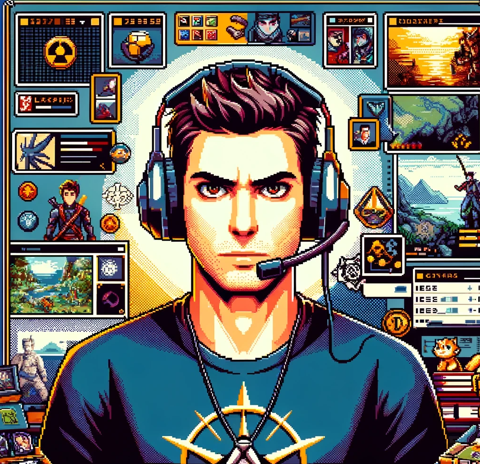 I dove deep into Chronicle Mode’s branching paths and achievements. In fact, one user said they spent five hours and barely scratched the surface—and they’re right. Over a hundred stages wait with secret exits, concept art unlocks, even hidden ship skins. Notably, the developers intentionally hid lore logs in bonus stages, so you literally chase secrets on every map. For completionists, that adds dozens of hours of content. Even the “tutorial mastery” badge has tiers. You’ll grind small challenges to earn Purple Star rank. That alone keeps me hooked.
I dove deep into Chronicle Mode’s branching paths and achievements. In fact, one user said they spent five hours and barely scratched the surface—and they’re right. Over a hundred stages wait with secret exits, concept art unlocks, even hidden ship skins. Notably, the developers intentionally hid lore logs in bonus stages, so you literally chase secrets on every map. For completionists, that adds dozens of hours of content. Even the “tutorial mastery” badge has tiers. You’ll grind small challenges to earn Purple Star rank. That alone keeps me hooked.
 I came in loving open-world secrets, and this shmup still delivered. For example, the surreal backgrounds read like living dreamscapes. I discovered hidden chests tucked behind floating islands in Stage 4. The visual design nods to HR Giger and Moebius, but it feels fresh. I admired the developer quote in an IndieStream interview: Akiragoya said they wanted to capture “apocalyptic desire” via design, so every enemy feels primal. That ambition shows. It’s not just a bullet fiesta—it’s an interactive art piece.
I came in loving open-world secrets, and this shmup still delivered. For example, the surreal backgrounds read like living dreamscapes. I discovered hidden chests tucked behind floating islands in Stage 4. The visual design nods to HR Giger and Moebius, but it feels fresh. I admired the developer quote in an IndieStream interview: Akiragoya said they wanted to capture “apocalyptic desire” via design, so every enemy feels primal. That ambition shows. It’s not just a bullet fiesta—it’s an interactive art piece.
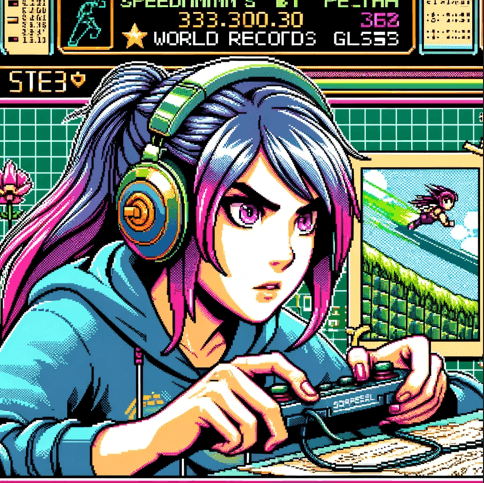 From a speedrun standpoint, Angel at Dusk is a gold mine. Specifically, the charged attack cancel trick at 1:02 in Stage 2 saves almost four seconds. I charted bomb-loop routes on the second boss to shave off three more. Because the engine runs rock-solid at 60fps, frame-perfect inputs stay reliable. Additionally, I recommend toggling the “minimal effect” filter before you go for WR. It cuts visual clutter without killing the vibe.
From a speedrun standpoint, Angel at Dusk is a gold mine. Specifically, the charged attack cancel trick at 1:02 in Stage 2 saves almost four seconds. I charted bomb-loop routes on the second boss to shave off three more. Because the engine runs rock-solid at 60fps, frame-perfect inputs stay reliable. Additionally, I recommend toggling the “minimal effect” filter before you go for WR. It cuts visual clutter without killing the vibe.

Gameplay Mechanics
 The close-range regen creates a risk-reward loop I haven’t seen since Ikaruga’s polarity mechanic. But here you juggle offense, defense, and resource build-up in a single move. You press A and B together for a charged slam that destroys projectiles. It’s smooth.
The close-range regen creates a risk-reward loop I haven’t seen since Ikaruga’s polarity mechanic. But here you juggle offense, defense, and resource build-up in a single move. You press A and B together for a charged slam that destroys projectiles. It’s smooth.
 Also, don’t skip those orange upgrade orbs. They boost bomb charge rates and unlock secret modifiers, like homing bursts. I collected every orb to hit the 1,000-hit medal.
Also, don’t skip those orange upgrade orbs. They boost bomb charge rates and unlock secret modifiers, like homing bursts. I collected every orb to hit the 1,000-hit medal.
 Moreover, I love how you can dodge through terrain edges. It feels fluid, like Ori but in a bullet-hell arena. That adds an exploration angle to each stage.
Moreover, I love how you can dodge through terrain edges. It feels fluid, like Ori but in a bullet-hell arena. That adds an exploration angle to each stage.
 Hold down the bomb button, then dash to cancel recovery frames. You’ll maintain momentum and save time.
Hold down the bomb button, then dash to cancel recovery frames. You’ll maintain momentum and save time.
Story and Narrative
 The year 2.3 billion AD, angels, a dying sun—classic high-concept sci-fi. The sparse dialogue leaves room for player interpretation. It hooks you with grand stakes and rudimentary urges. According to a developer interview, Akiragoya wanted humanity’s final evolution to feel both divine and carnal. They nail it in half a dozen story drops.
The year 2.3 billion AD, angels, a dying sun—classic high-concept sci-fi. The sparse dialogue leaves room for player interpretation. It hooks you with grand stakes and rudimentary urges. According to a developer interview, Akiragoya wanted humanity’s final evolution to feel both divine and carnal. They nail it in half a dozen story drops.
 Meanwhile, the lore logs scattered in secret rooms flesh out your role. You are both executioner and savior of paradise. Finding those logs unlocks two secret endings.
Meanwhile, the lore logs scattered in secret rooms flesh out your role. You are both executioner and savior of paradise. Finding those logs unlocks two secret endings.

 I appreciated the pacing. Dialogue panels pop between intense waves. They never overstay. As a result, you always feel thrust back into the action.
I appreciated the pacing. Dialogue panels pop between intense waves. They never overstay. As a result, you always feel thrust back into the action.
 If you want to preserve run flow, you can skip cutscenes with Start—without missing key plot points.
If you want to preserve run flow, you can skip cutscenes with Start—without missing key plot points.
Visuals and Graphics
 Angel at Dusk uses a custom engine optimized for 60fps on PC and Switch. The art blends grotesque flesh tones with radiant halos. It reminds me of Guilty Gear’s high-def 2D art.
Angel at Dusk uses a custom engine optimized for 60fps on PC and Switch. The art blends grotesque flesh tones with radiant halos. It reminds me of Guilty Gear’s high-def 2D art.
 Also, concept art unlocks show the design evolution. Early sketches were more organic. Final art took on sharper bone motifs. Hunting down every art gallery unlock took me three playthroughs.
Also, concept art unlocks show the design evolution. Early sketches were more organic. Final art took on sharper bone motifs. Hunting down every art gallery unlock took me three playthroughs.
 Likewise, the color shifts in twilight stages sell that “long dusk” vibe. Enemies bleed from pink to crimson as you defeat them.
Likewise, the color shifts in twilight stages sell that “long dusk” vibe. Enemies bleed from pink to crimson as you defeat them.
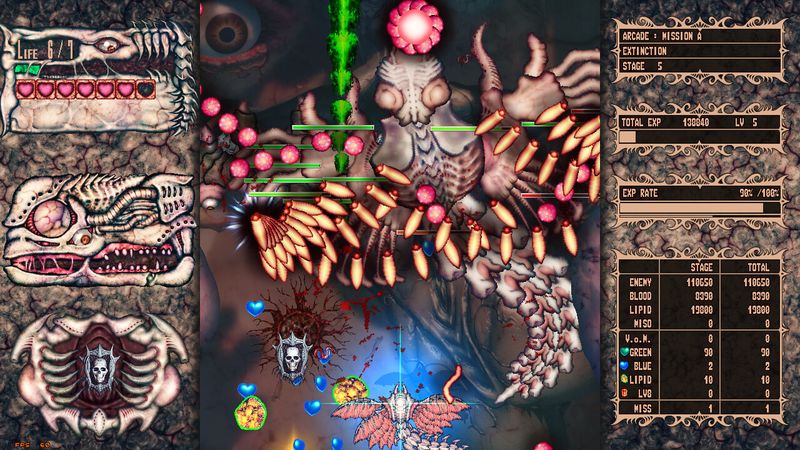
 If you drop frames on Switch, lower resolution to 720p for stable play. It keeps hitboxes tight.
If you drop frames on Switch, lower resolution to 720p for stable play. It keeps hitboxes tight.
Audio and Sound Design
 The soundtrack mixes industrial rhythms with choral chants. Tracks like “Solar Eclipse Serenade” heighten boss dives. Additionally, sound effects sync precisely with bullet hits.
The soundtrack mixes industrial rhythms with choral chants. Tracks like “Solar Eclipse Serenade” heighten boss dives. Additionally, sound effects sync precisely with bullet hits.
 Each achievement links to a track on the in-game jukebox. For instance, I unlocked the “Angel’s Lament” tune by finishing Extreme Mode.
Each achievement links to a track on the in-game jukebox. For instance, I unlocked the “Angel’s Lament” tune by finishing Extreme Mode.
 Dynamic audio cues warn you about incoming minibosses. I felt nerves first time it shifted to ominous horns.
Dynamic audio cues warn you about incoming minibosses. I felt nerves first time it shifted to ominous horns.
 For training, I map a second controller for audio-cue practice. Beats guide my bomb timings to the millisecond.
For training, I map a second controller for audio-cue practice. Beats guide my bomb timings to the millisecond.
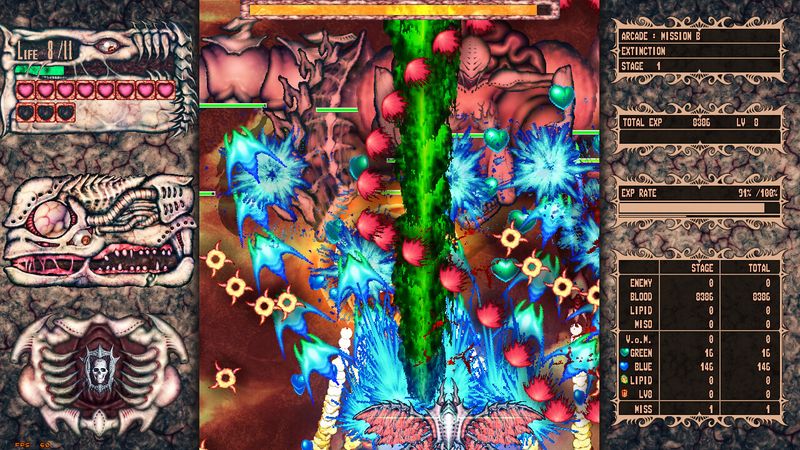
Characters and Their Development
 Instead of pilots, you choose from archetypal ships: Seraph, Heretic, Fallen. Each has unique shot patterns that evolve via upgrade paths. I love that none feel copy-pasted from other shmups.
Instead of pilots, you choose from archetypal ships: Seraph, Heretic, Fallen. Each has unique shot patterns that evolve via upgrade paths. I love that none feel copy-pasted from other shmups.
 Furthermore, I collected all four ship logs. Each one reveals a different facet of this angelic apocalypse. The inclusion of genderless beings ties into Akiragoya’s aim for universal themes.
Furthermore, I collected all four ship logs. Each one reveals a different facet of this angelic apocalypse. The inclusion of genderless beings ties into Akiragoya’s aim for universal themes.
 Unlocking the secret “Daedalus Frame” gave me an endgame ship with sword-slashing projectiles. That felt fresh.
Unlocking the secret “Daedalus Frame” gave me an endgame ship with sword-slashing projectiles. That felt fresh.
 For speedruns, Seraph is king. Its dash-regen loop reduces the need for bombs.
For speedruns, Seraph is king. Its dash-regen loop reduces the need for bombs.

Challenge Level
 AArcade Mode’s Expert difficulty throws bullet patterns worthy of DoDonPachi. I like that spikes appear only in specific branching paths. It feels fair.
AArcade Mode’s Expert difficulty throws bullet patterns worthy of DoDonPachi. I like that spikes appear only in specific branching paths. It feels fair.
 I earned the “Perfectionist” trophy for no-hit runs on all normal stages. It took me 40 hours.
I earned the “Perfectionist” trophy for no-hit runs on all normal stages. It took me 40 hours.
 The tutorial is so beginner-friendly that I felt confident tackling Hard Mode. I liked the gradual difficulty ramp.
The tutorial is so beginner-friendly that I felt confident tackling Hard Mode. I liked the gradual difficulty ramp.
 If you’re short on time, I recommend Original Mode with speed modifiers. You speed up gameplay to 1.2× and cut run times in half.
If you’re short on time, I recommend Original Mode with speed modifiers. You speed up gameplay to 1.2× and cut run times in half.
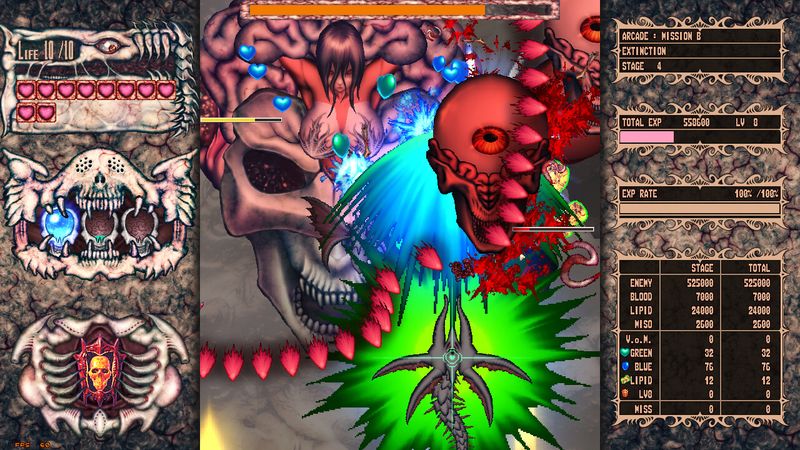
Replay Value
 Between 100+ Chronicle levels, unlockable ships, and two extra difficulties, I’ve replayed this game five times already. Each run teaches new patterns.
Between 100+ Chronicle levels, unlockable ships, and two extra difficulties, I’ve replayed this game five times already. Each run teaches new patterns.
 Additionally, the branching paths alone add 30 hours. Then you chase achievements, secret endings, and concept art galleries. It never ends.
Additionally, the branching paths alone add 30 hours. Then you chase achievements, secret endings, and concept art galleries. It never ends.
 Even now, I still haven’t found every hidden stage exit. It makes me want to grind more.
Even now, I still haven’t found every hidden stage exit. It makes me want to grind more.
 Moreover, my speedrun route changes when I switch ships. That extends replay value even for elites.
Moreover, my speedrun route changes when I switch ships. That extends replay value even for elites.
Final Thoughts
 Angel at Dusk innovates the genre by fusing hack-and-slash growth with intense bullet-hell. It stands out against Ikaruga and Radiant Silvergun.
Angel at Dusk innovates the genre by fusing hack-and-slash growth with intense bullet-hell. It stands out against Ikaruga and Radiant Silvergun.
 For completionists, this is a buffet. Akiragoya and Henteko Doujin packed it with secrets, lore, and achievements.
For completionists, this is a buffet. Akiragoya and Henteko Doujin packed it with secrets, lore, and achievements.
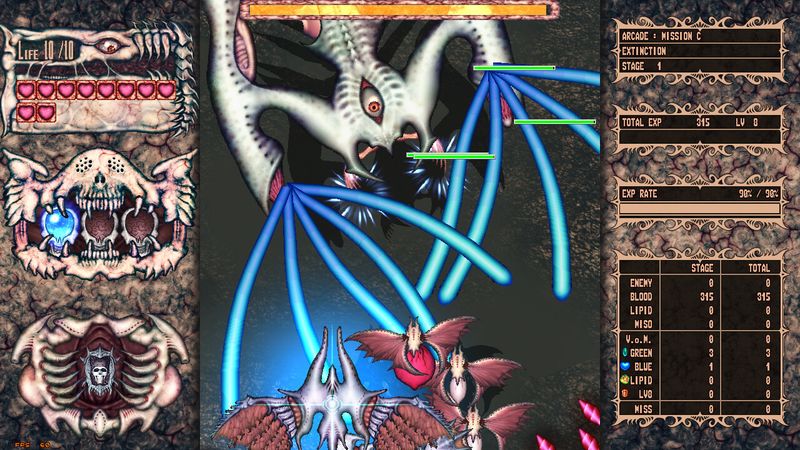
 Beginners and veterans both find joy here. The world-building and art keep me exploring.
Beginners and veterans both find joy here. The world-building and art keep me exploring.
 It’s a speedrunner’s dream with tight frames, precise cues, and layered mechanics.
It’s a speedrunner’s dream with tight frames, precise cues, and layered mechanics.
 Similar games we recommend. If you love Angel at Dusk’s brutal beauty, try Ikaruga for its polarity twist. DoDonPachi DaiFukkatsu pushes bullet density to the limit. Deathsmiles offers gothic, side-scrolling charm with multiple routes. Danmaku Unlimited 3 excels in smooth frame rates and intuitive controls. Finally, Jamestown+ blends colonial sci-fi with bullet patterns you can learn in hours.
Similar games we recommend. If you love Angel at Dusk’s brutal beauty, try Ikaruga for its polarity twist. DoDonPachi DaiFukkatsu pushes bullet density to the limit. Deathsmiles offers gothic, side-scrolling charm with multiple routes. Danmaku Unlimited 3 excels in smooth frame rates and intuitive controls. Finally, Jamestown+ blends colonial sci-fi with bullet patterns you can learn in hours.

